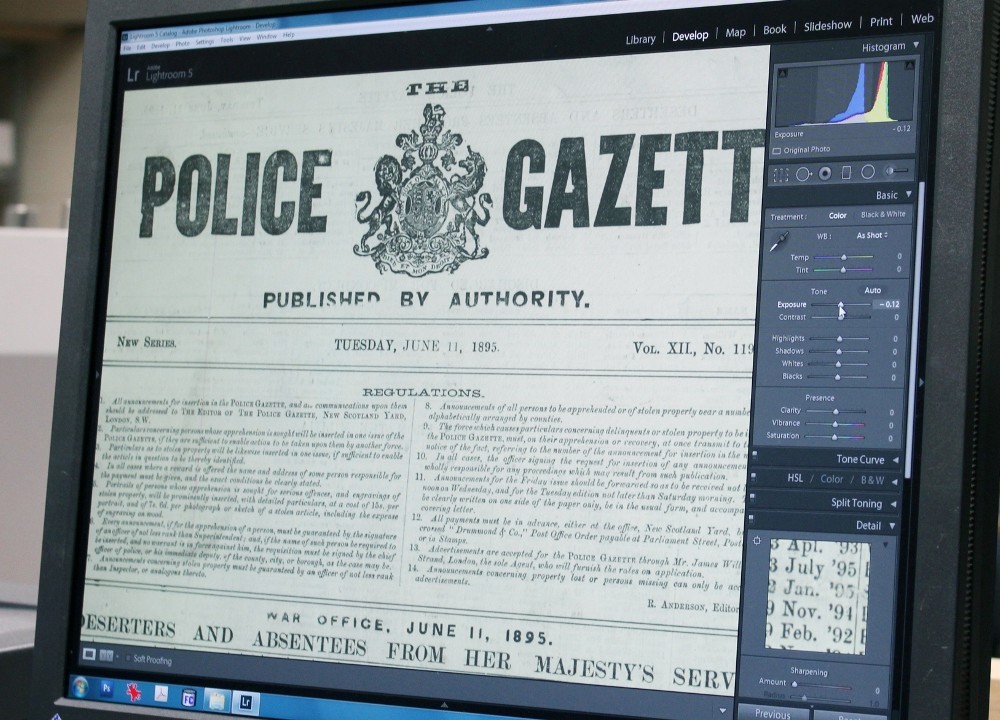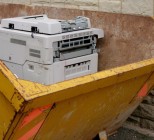Through their website – Luminary Trading Limited, makes available a fully text searchable collection of thousands of pages of scarce British and Irish newspapers and other publications, most of which were printed between the years 1710 and 1900.
The name “Last Chance To Read” was chosen to highlight the scarcity of the content. For while many copies of each issue of a newspaper were originally printed, very few survive today, so few in fact they believe that some of the images on their website could be the last copies in existence of that newspaper.
The owners of the resource, Luminary Trading, possess a substantial collection of over 45,000 historic British and Irish newspapers and aim to eventually make them all available online.
For family historians, titles include The Police Gazette (London) or “The Hue and Cry” (Ireland) can be invaluable in tracing lost criminal ancestors. While 18th and 19th century regional newspapers, such as the Salopian or the Bath Chronicle, contain a wealth of local stories, advertisements, and obituaries.
The Police Gazette’s and the Hue and Cry’s are very scarce publications. They contain the names and descriptions of those the Police sought to apprehend, along with details of property and animals lost or stolen. They also frequently list deserters from the Army, Navy, and Marines.
But it is researchers of Irish Family history who may be the largest beneficiaries. As the Hue and Cry frequently included the names other family members and even a suspect’s mother’s maiden name may appear. This makes it an invaluable resource for historians and genealogists alike.

Processes
The work is carried out in our dedicated imaging studio in Nuneaton which has been specifically designed for the digitisation of heritage and modern material. All digitisation and storage takes place in a humidity and temperature controlled environment as well as correct protocols followed to ensure the best possible handling of material.
Before the newspapers can be scanned they are assessed for general fragility as well as brittleness, mould and other signs of damage. When preparing publications for scanning, staff are required to unfold any corners that have been turned down and ensure pages are turned with care to avoid damaging already fragile paper.
When scanning fragile documents we always recommend using a flatbed capture device. Sheet fed scanners have the advantage of producing faster scans but this rigorous method is unsuitable for digitising older and deteriorating newspaper archives due to the way the material is fed through the machine, over time this can cause damage or even tears. With this in mind the scans were produced using an SMA large format scanner.
The SMA is a linear array scanner meaning that the newspapers are scanned from above which reduces the chances of damage. It is well known that the intense lighting used in photography can damage frail documents The SMA scanner only subjects the documents to light during the scanning process keeping exposure to a minimum thereby reducing the risk of damage from light. The SMA range of equipment has a proven track record in producing excellent image quality and the brand is recognised as a market leader in manufacturing bespoke heritage digitisation equipment. All units are equipped with a floating book cradle which can be locked in position to provide a stable surface for capturing flat documents.
All images are captured in a RAW format to preserve as much information as possible. Post-processing in market leading image manipulation software is then performed on colour managed monitors to format the output to the client requirements. Global or local colour corrections, scanning range, colour depth and image compression may all be considered necessary processes to achieve the output required by the client.
Once a small batch of content is captured the original papers are removed from the digitising station to the secure storage room and will not again be handled except when returned to the client.
Richard Heaton, Managing Director of Luminary Trading said: “Genus is a business which values its customers and goes out of its way to help them. Not only does it have the equipment and an experienced team but also the processes to deliver consistent quality images with a deep understanding of the heritage digitisation process. All of which means I can be confident the image output will suit my requirements and the originals will be returned to me in the same condition as they arrived.”
We’d like to thank Richard Trading for his contribution to this case study. If you are interested in learning more about the newspapers featured in this case study please visit the website.









